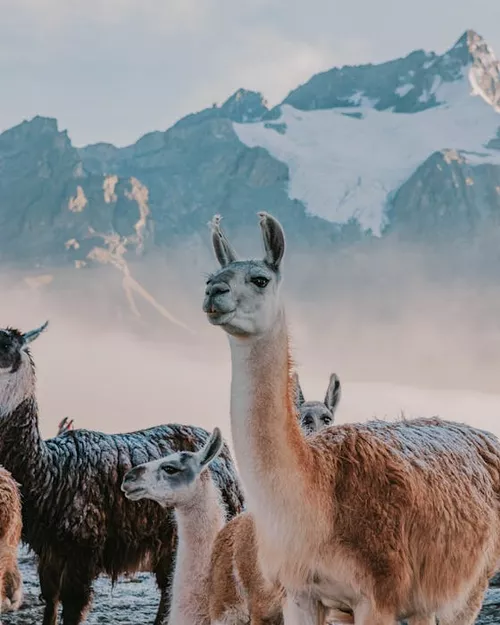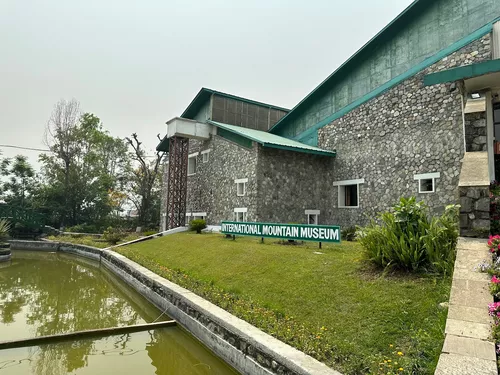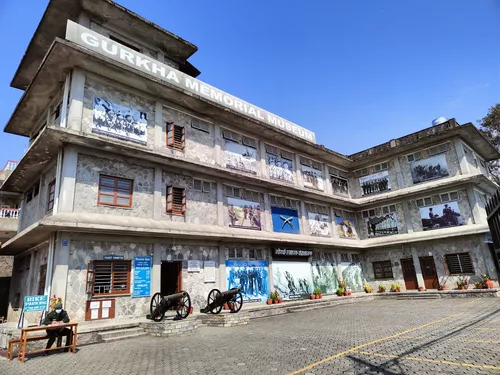Pokhara is popular for
Pokhara in next 3 month
Weather in Pokhara
December in Pokhara is cool with clear skies and good air quality.
Usual trip duration
A 2-3 day trip to Pokhara allows you to explore the serene Phewa Lake, visit the World Peace Pagoda, and take a short trek to the stunning viewpoints of Sarangkot. It's a perfect duration for a quick getaway and to experience the natural beauty of Pokhara.
Affordable with some luxury options
Ideas To Plan Your Trip
Places To Visit
Places To Eat
Frequently Asked Questions about Pokhara, Nepal
The best time to visit Pokhara is during the spring (March to May) and autumn (September to November) seasons. During these months, the weather is pleasant with clear skies, making it ideal for trekking, sightseeing, and enjoying the stunning views of the Annapurna and Dhaulagiri mountain ranges. The temperature during these periods ranges from 15°C to 25°C, providing comfortable conditions for outdoor activities. Avoiding the monsoon season (June to August) is highly recommended as heavy rainfall can disrupt travel plans and obscure mountain views. Winter (December to February) can also be a good time to visit if you don't mind cooler temperatures, but the mountain views may not be as clear due to fog and haze. Always check weather forecasts before planning your trip.
Pokhara is well-connected to Kathmandu and other major cities in Nepal via air and road. Here's a detailed breakdown of how to reach Pokhara:
Pokhara is renowned for its stunning natural beauty and adventure activities. Here are some of the must-visit attractions:
Pokhara offers a wide range of activities for adventure seekers and nature lovers alike. Here are some popular activities:
Trekking: Pokhara is the gateway to numerous trekking routes, including the Annapurna Base Camp Trek, Poon Hill Trek, and Mardi Himal Trek.
Paragliding: Experience the thrill of flying over Pokhara Valley with stunning views of the mountains and lakes.
Boating: Enjoy a relaxing boat ride on Phewa Lake or Begnas Lake.
Zip-lining: Experience the world's steepest zip-line with incredible views.
Ultra-light Flight: Take an ultra-light aircraft flight for a unique aerial view of the mountains and valleys.
Mountain Biking: Explore the surrounding hills and villages on a mountain bike.
Fishing: Enjoy fishing in Begnas Lake.
Yoga and Meditation: Participate in yoga and meditation retreats amidst the serene natural surroundings.
Pokhara serves as an excellent base for exploring other beautiful destinations in the region. Here are some popular nearby places to visit:
Pokhara offers a variety of shopping options, from tourist souvenirs to local handicrafts. Here are some popular shopping spots:
Pokhara boasts a diverse culinary scene, offering everything from traditional Nepali cuisine to international dishes. Here are some of the best restaurants and street food spots:
Yes, Pokhara is generally considered a safe destination for travelers. However, like any tourist destination, it's important to take certain precautions to ensure your safety and well-being:
Petty Theft: Be aware of your belongings, especially in crowded areas like Lakeside. Avoid displaying expensive jewelry or electronics.
Road Safety: Exercise caution when crossing roads, as traffic can be unpredictable. If renting a motorbike, wear a helmet and drive responsibly.
Food and Water: Drink bottled water and avoid eating at establishments with questionable hygiene standards. Be cautious of street food.
Trekking Safety: If planning a trek, hire a reputable guide and porter. Inform someone of your trekking plans and expected return date. Carry a first-aid kit and necessary supplies.
Natural Disasters: Nepal is prone to earthquakes and landslides. Be aware of emergency procedures and follow local advice in case of a natural disaster.
Political Stability: While Pokhara is generally politically stable, it's wise to stay informed about current events and avoid large gatherings or protests.
The local currency in Nepal is the Nepalese Rupee (NPR). It's advisable to have some cash on hand, especially when traveling to more remote areas or for smaller transactions. While credit cards are accepted in some establishments in Pokhara, they are not as widely used as cash.
Credit Card Acceptance:
Hotels: Most mid-range and high-end hotels in Pokhara accept credit cards, typically Visa and Mastercard.
Restaurants: Many tourist-oriented restaurants in Lakeside and other popular areas accept credit cards, but it's always a good idea to confirm before ordering.
Shops: Larger shops and souvenir stores may accept credit cards, but smaller shops and local markets usually prefer cash.
ATMs: ATMs are available in Pokhara, especially in Lakeside and the city center, allowing you to withdraw NPR using your debit or credit card. Be aware of potential transaction fees.
Tips for Using Credit Cards:
Inform your bank: Notify your bank of your travel plans to Nepal to avoid your credit card being blocked due to unusual activity.
Be cautious: Be vigilant when using your credit card to prevent fraud. Keep your card in sight and avoid using it in suspicious establishments.
Cash is king: It's always a good idea to have sufficient cash on hand for transactions where credit cards may not be accepted.
Pokhara is situated at an altitude of approximately 822 meters (2,697 feet) above sea level. While this altitude is relatively low compared to other parts of Nepal, such as the Everest region, it's still important to be aware of the potential for altitude sickness, especially if you plan to trek to higher elevations near Pokhara. Altitude sickness, also known as acute mountain sickness (AMS), can occur when your body doesn't get enough oxygen at higher altitudes.
Prevention Tips:
Acclimatize Gradually: If you plan to trek to higher elevations, ascend gradually, allowing your body time to adjust to the reduced oxygen levels. Avoid rapid ascents.
Stay Hydrated: Drink plenty of water to stay hydrated. Dehydration can worsen the symptoms of altitude sickness.
Avoid Alcohol and Smoking: Alcohol and smoking can impair your body's ability to absorb oxygen, increasing the risk of altitude sickness.
Eat Light Meals: Consume easily digestible meals, as digestion requires energy and oxygen.
Listen to Your Body: Pay attention to your body's signals. If you experience symptoms of altitude sickness, such as headache, nausea, dizziness, or shortness of breath, descend to a lower altitude immediately.
Consider Medication: Consult your doctor about taking medication, such as Acetazolamide (Diamox), to help prevent altitude sickness. However, medication should be used as a supplement to acclimatization, not a replacement for it.
Nepal has a rich and diverse culture, and it's important to be respectful of local customs and traditions when visiting Pokhara. Here are some cultural norms and etiquette tips to keep in mind:
Dress Modestly: Dress respectfully, especially when visiting religious sites. Avoid wearing revealing clothing. Shoulders and knees should be covered when entering temples or monasteries.
Remove Shoes: Remove your shoes before entering temples, monasteries, and some homes. Follow the lead of locals.
Use Right Hand: Use your right hand when eating, giving, or receiving things. The left hand is considered unclean.
Respect Religious Sites: Avoid touching religious objects or statues. Walk around stupas and prayer wheels in a clockwise direction.
Public Displays of Affection: Avoid public displays of affection, as they are not common in Nepali culture.
Bargaining: Bargaining is common in markets and tourist areas, but do so respectfully and with a smile. Avoid haggling excessively.
Photography: Ask for permission before taking photos of people, especially in rural areas.
Greetings: Greet people with “Namaste,” which is a respectful greeting accompanied by pressing your palms together.
Tipping: Tipping is customary in restaurants and for services. A tip of 10% is generally appreciated.
Yes, Pokhara is well-equipped with numerous trekking gear rental shops, making it convenient for trekkers who prefer not to bring their own equipment. These shops offer a wide range of trekking gear for rent, including backpacks, sleeping bags, trekking poles, hiking boots, jackets, and other essential items. Lakeside is the primary hub for these rental shops, with several options to choose from.
Tips for Renting Trekking Gear:
Inspect the Gear: Before renting, carefully inspect the gear for any damage or wear and tear. Make sure zippers, buckles, and straps are in good working condition.
Check Sizes: Ensure that the rented gear fits you properly. Try on hiking boots with trekking socks and adjust backpack straps for a comfortable fit.
Ask Questions: Don't hesitate to ask the shop staff about the gear's features, usage, and any specific instructions.
Negotiate Prices: Bargaining is common in Pokhara, so try to negotiate the rental prices, especially if you're renting multiple items or for an extended period.
Read the Rental Agreement: Carefully read the rental agreement before signing it to understand the terms and conditions, including the return policy and any liability for damage or loss.
Consider Hygiene: If renting items like sleeping bags or jackets, consider bringing your own liner or washing the gear before use for hygiene purposes.










































